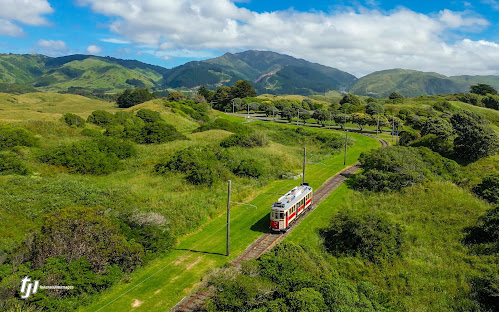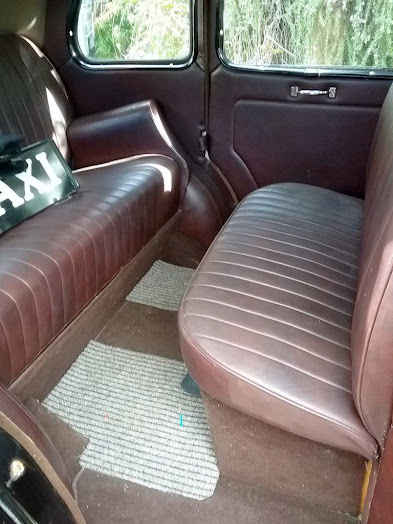Showing recent Copenhagen S-Bahn electric trains and a tram. See earlier posts.
Tuesday, April 30, 2024
1950s A1A-A1A diesel locomotive of Sierra Leone
Sunday, April 28, 2024
A NZR J class 4-8-2 trundles along the main street of Kawakawa, 1940s
Still with the bullet nose streamlining which was removed in the late 1940s. The train will be an Opua Express. See earlier posts, and of course, our books for much more.
Western Maryland 2-8-0
One of Western Maryland's trusty H Class 2-8-0's -- the road number is not legible -- has a short coal train on the Connellsville Extension near Deal, Pennsylvania in the 1950s. Bill Price photo via American-Rails.com.
Info on the Connellsville Extension is here
Info on all the variants of the H class is here
Saturday, April 27, 2024
Chemins de fer de l'Est (France) to the Lötschberg (Switzerland) route poster, circa 1913
One assumes that is a railway tunnel on the Lotschbergbahn, although the track isn't obvious. See earlier posts on the Lotschberg.
Jugoslavia electric locomotive stamp, 1995
Westinghouse electric locomotive demonstration train, 1905
Hafeet Rail lets contracts to build Oman – UAE railway
Three agreements have been signed paving the way for construction of a 303 km mixed-traffic railway linking the port of Sohar in Oman with Abu Dhabi in the UAE.
The contracts for the project, which is expected to have a total budget of around US$3 billion, were announced on April 23 during the joint UAE-Omani Business Forum in Abu Dhabi.
At the same event, the Oman – Etihad Rail joint venture of national railway project promoters Oman Rail and Etihad Rail, which was formed in September 2022, announced that it is to rebrand as Hafeet Rail. Hafeet Rail will also maintain the railway line between Sohar and the existing UAE national rail network.
Friday, April 26, 2024
Pickfords Scammell truck, 1950s
Tuesday, April 23, 2024
Monday, April 22, 2024
Saturday, April 20, 2024
old Wellington tram in the countryside
There were never any Wellington lines that did run though countryside, but this shows an ex-Wellington tram on the Paekakariki Tram Museum line on the Kapiti Coast; a nice drone shot by Waikanae based artist and photographer, Tokerau Jim on his Facebook page. See earlier posts on the Tramway Museum.
Friday, April 19, 2024
Tuesday, April 16, 2024
2-6-6-2 'Mallet Mogul'
Built by Baldwin in 1929, and used by the Southwest Forest Lumber Mills, it is now displayed near the Museum of Northern Arizona in Flagstaff. (Geoff Churchman pic)
The first Mallet was an 0-6-6-0. Around 1905 the Great Northern Railroad was interested in one but wanted a locomotive that was better suited to main line operation. Baldwin built five "0-6-6-0"s with leading and trailing two-wheel trucks. This configuration suited the GN's curving main line of the Cascades.
It wasn't until 1910 that 2-6-6-2s were built with their firebox behind the drivers and supported by the trailing truck which is normally why one would have a trailing truck. Subsequent 2-6-6-2s were built following this design.
The 2-6-6-2 was primarily a low-speed locomotive. This wheel arrangement was also commonly used on the logging railroads in the Western USA. However, the C&O (Chesapeake & Ohio) continued developing the 2-6-6-2. Their versions evolved into very large road locomotives. With their smokebox-mounted air pumps, they looked quite impressive. Fortunately, two of these class H-6 C&O locomotives survive today.
This wheel arrangement was also used by the Southern Pacific in their development of the Cab Forward locomotive. On the SP this wheel arrangement was called a "Mallet Mogul".
Monday, April 15, 2024
Sunday, April 14, 2024
1959 Cadillac and a trailer
What in British Commonwealth countries is called a caravan. Probably the car was new when the pic was taken.






































%202.jpg)
.jpg)










